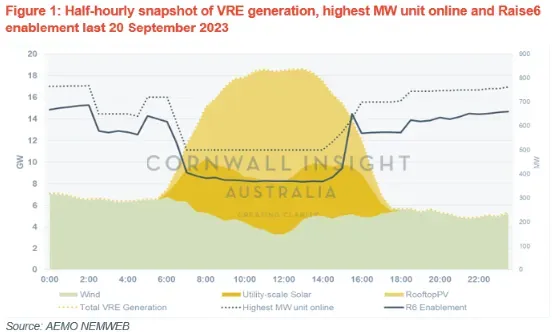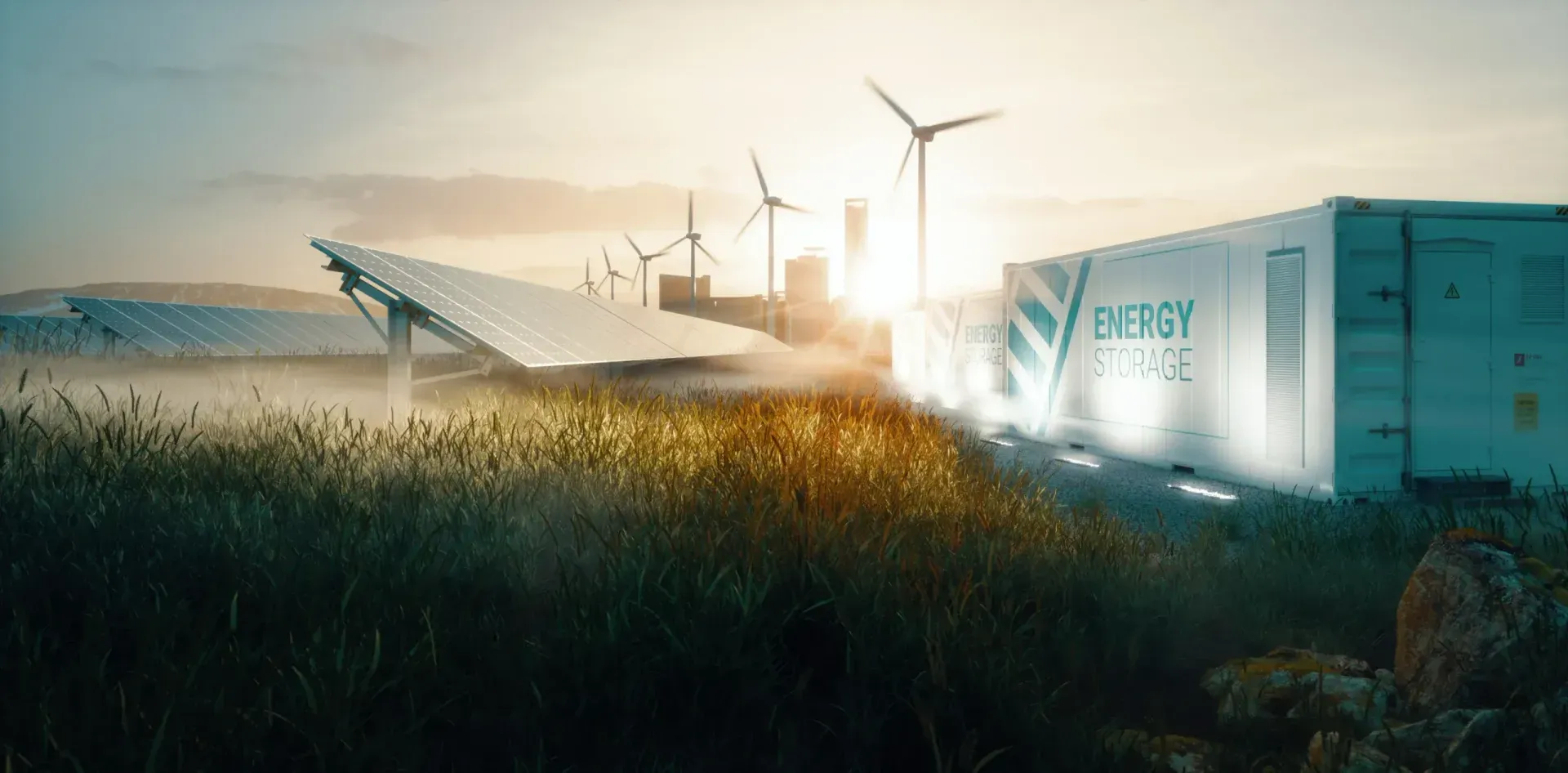On 9 October 2023, 1pm (market time), the dispatch of the new Very Fast (VF) FCAS market in the NEM will commence and will add two new markets for contingency FCAS, Raise 1 (R1) and Lower 1 (L1). AEMO has released a f__inal industry go-live plan to keep track of activities before the eventual launch of this new market. Some important dates to keep in mind:
| AEMO actions | Industry impacts and actions | Planned time |
|---|---|---|
| VF FCAS submission commences, requirement set at commissioning value | Registered VF FCAS providers can commence submission of raise and lower 1s offers | 25 September 2023 |
| AEMO deploys wholesale settlement systems changes to production | 27 September 2023 | |
| 7-day pre-dispatch commences | 7-day pre-dispatch runs inclusive of VF FCAS consumption and pre-dispatch instructions via the data interchange | 2 October 2023 |
| AEMO assesses market readiness for service requirements* | 3 October 2023 | |
| 5-min pre-dispatch commences | 5-min pre-dispatch runs inclusive of VF FCAS consumption and pre-dispatch instructions via the data interchange | 8 October 2023 (11pm) |
| VF FCAS rule commencement, Bids dispatched | Dispatch instructions include VF FCAS | 9 October 2023 from 1pm (market time) |
*If there are not sufficient registered participants to achieve the required volumes, AEMO will revise/revoke FCAS requirements in 2 weeks.
Upon commencement of the VF FCAS market, a commissioning period of two weeks with an initial requirement of 50 MW for both Raise and Lower 1s service will be used to establish market operations and to allow AEMO to react if any issue arises.
In AEMO’s final service commencement plan, assuming inertia levels are the same as in 2022, the median mainland R1 requirement is estimated to be around 300MW and possibly up to around a median of 500MW during low inertia periods. In this Chart of the week, we look at NEM’s record-breaking day last 20 September 2023, when 69.9% instantaneous renewable penetration was recorded for 30 minutes ending 11:30am, and use it as a test scenario to determine what a time-of-day requirement for R1 would look like for a system with high penetration of variable renewable energy resource.

During periods of high VRE generation, some synchronous generators choose to lower their generation output as it may be more economical (from their perspective) as prices tend to decrease during these times. Figure 1 shows the R6 FCAS requirement alongside VRE generation and the level of the highest MW unit online for 20 September 2023. R6 enablement follows the same trend as the Highest MW unit online” or MW risk and aligns with the constraint equation defined in the constraints implementation guidelines, which sets that R6 and R60 requirements should be greater than or equal to the largest generator in NEM less load relief in NEM regions. The R1 requirement calculation takes into account the same variables to determine R6/R60 requirements but with a few additional variables considered, inertia levels, which along with MW risk to determine Peak RoCoF Risk”, or as officially defined in the constraints implementation guidelines:

where Ratio Calc” is determined based on the MW at risk, regional inertia, and demand. The Ratio Calc” will calculate the Raise 1-sec requirements as a fraction of the Raise 6-second requirement, with a ratio less than 1.
On a system with low amounts of inertia coming from synchronous generation, when a contingency event happens, the Rate of change of frequency” or RoCoF increases. VF FCAS requirement increases when system inertia is low and decreases when system inertia is high. If we use our recently acquired knowledge on determining VF FCAS requirement and take a look at the market conditions on 20 September 2023, we can assume that peak Peak RoCoF Risk” occurs during a time when VRE generation is at its highest, and we can assume Ratio Calc” to be highest there as well. If we follow the same assumption throughout the day, the R1 requirement profile for 20 September 2023 will, generally, have the same profile as that of total VRE generation. While mid-day peaking may be the more common occurrence for R1 requirement, low system inertia may occur at different times of the day as variable renewable energy production tends to be unpredictable. For example, SA has experienced high wind generation from 1am on 6 September 2023 to 4pm on 8 September 2023, where wind generation alone accounted for an average of 64% (wind+rooftop and utility-scale solar accounting for 87%) of the region’s total generation over that three day period.
However, we may have to wait for some time before we move to a dynamic determination of VF FCAS requirement levels. As pointed out in the final commencement plan, the revision of load relief in 2019 took five months of a transition period. AEMO is setting out fortnightly increases in VF FCAS requirements from the initial 50MW requirement and progressively increasing it to allowed requirement volumes depending on the level of registered capacity and participants’ committed participation in the VF FCAS services.
Cornwall Insight has an in-house FCAS forecast model, and our next release will include the new VF FCAS markets with forecast prices for a 20-year horizon. Our model is based on engineering techniques and assumptions, leveraging our extensive experience, comprehensive research, and independent perspective on relevant areas. For more information on power and market modelling or other insight services, please contact enquiries@cornwall-insight.com.au.







